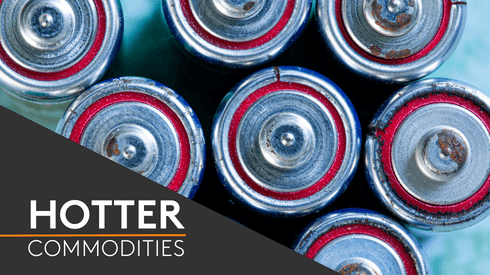Speaking in a recent interview, Iván Arriagada said that current TCs will likely continue to remain at current low levels for a while before gradually normalizing.
“We’ll probably see more reductions in capacity in the near-term. It is a market which is favorable for concentrate and I think it will remain that way for a time yet,” he said during the annual CESCO industry week in Santiago, Chile.
“We’ve seen as a response that some smelters have actually reduced the level of utilization to be able to bring a more balanced condition in the market, and I think it will remain like this for a while. But, I think progressively, things will move into balance,” Arriagada told Fastmarkets.
Get notified when Andrea Hotter publishes new articles and interviews on the natural resources sector. Receive the latest stories straight to your inbox.
China’s Copper Smelters Purchase Team (CSPT) recently called for more cuts due to persistent tightness in availability of concentrates.
Copper concentrate supply had already been tight for some time, but this became more noticeable when First Quantum was ordered to suspend production at its 350,000 tonne per year Cobre Panama mine due to a ruling by the Supreme Court of Panama.
A number of copper producers also unexpectedly lowered mine production guidance for 2024, adding to the tightening concentrate situation.
Meanwhile, the addition of major new smelting capacity in 2024 – starting with the expansion of Freeport’s Gresik smelter in Indonesia – made maintenance breaks, capacity curtailments and closures more likely, with operating costs starting to become untenable.
According to Arriagada, it would not be a surprise for a significant amount of smelting capacity to be loss-making right now, based on current spot TCs.
“However, that’s based on spot rates, and most smelters and refiners have a combination of contracts with miners that have staggered pricing, so probably the average income is slightly higher than zero,” he said. “But most industries, certainly at that level, would be struggling.”
Copper smelters typically have some percentage of copper concentrate contractual supply tied to 2024’s benchmark number, which was agreed at $80 per tonne between Antofagasta and China’s Jinchuan Group in November 2023.
The spot market has changed considerably since then.
Fastmarkets calculated the weekly copper concentrates TC index, cif Asia Pacific at $0.10 per tonne per tonne on Friday April 12, down from $2.30 per tonne the prior week, its lowest level on record.
TCs are the fees mining companies pay smelters to have their semi-processed ore, or concentrate, turned into finished metal. Typically, tighter spot supply leads to a drop in spot TCs and RCs.
According to Arriagada, most of the increasing demand for concentrate is driven from the Asia region.
“We have long-term contracts, and therefore, most of our production goes into term agreements. So, we see some of [the current spot market] play, but we’re not fully driven by what happens in the spot market,” he said. “However, I would say this is certainly a good time to be producing concentrates because of the level of TCs/RCs that we see.”
Antofatasta operates four copper mines in Chile, two of produce significant volumes of by-products. All of the group’s operations are located in the Antofagasta Region of northern Chile, except for its flagship operation Los Pelambres, which is in the Coquimbo Region of Central Chile.
The group produced 660,600 tonnes of copper in 2023, up by 2.2% from 646,200 tonnes in 2022. Copper production guidance for 2024 is 670,000-710,000 tonnes.
In Hotter Commodities, special correspondent Andrea Hotter covers some of the biggest stories impacting the natural resources sector. Sign up today to receive Andrea’s content as it is published.





